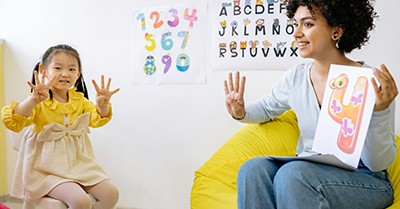Preparing children for the leap into formal schooling involves more than academic knowledge—it means supporting their holistic development across cognitive, social, emotional, and physical domains. This checklist supports educators and families in identifying foundational skills and strengths, in alignment with the Early Years Learning Framework (EYLF) outcomes and contributing toward Quality Improvement Plan (QIP) goals such as practice refinement, documentation, and improved transition planning.
Cognitive & Early Academic Skills
EYLF Outcome 4 – Children are confident and involved learners
- Recognizes basic shapes and colors
- Counts to at least 10 and understands quantity
- Identifies some letters and numbers
- Recognizes own name in print
- Matches and sorts objects by category
- Understands simple patterns and sequences
Language & Communication
EYLF Outcome 5 – Children are effective communicators
- Speaks in full sentences and is understood by others
- Follows two-step directions
- Asks and answers questions
- Retells simple stories or events
- Engages in conversations with peers and adults
- Recognizes rhyming words and beginning sounds
Fine Motor Skills
EYLF Outcome 3 – Children have a strong sense of well-being.
- Holds pencil or crayon with control
- Cuts along lines with scissors
- Traces shapes, letters, or numbers
- Draws basic figures (e.g., person with head, body, limbs)
- Manipulates small objects like beads or buttons
Gross Motor Skills
EYLF Outcome 3 - Children have a strong sense of well-being.
- Runs, jumps, hops, and climbs confidently
- Throws and catches a ball
- Balances on one foot for a few seconds
- Moves rhythmically to music
Social & Emotional Development
EYLF Outcome 1 – Children have a strong sense of identity
EYLF Outcome 3 - Children have a strong sense of well-being.
- Separates from caregiver with minimal distress
- Shares and takes turns
- Expresses emotions appropriately
- Follows classroom routines
- Shows interest in group activities
- Demonstrates independence in self-care (e.g., toileting, dressing)
Creative Expression
EYLF Outcome 4 - Children are confident and involved learners
EYLF Outcome 5 - Children are effective communicators
- Engages in pretend play
- Uses art materials to express ideas
- Sings songs and participates in group music activities
- Tells imaginative stories
Practical Independence
EYLF Outcome 3 - Children have a strong sense of well-being.
EYLF Outcome 1 - Children have a strong sense of identity.
- Packs and unpacks own bag
- Recognizes belongings
- Uses lunchbox and water bottle independently
- Understands basic safety rules
By nurturing these foundational skills, educators and families play an essential role in shaping confident, capable learners who are ready to thrive in their school journey. This checklist is not about ticking boxes—it’s about celebrating each child’s unique pathway and ensuring the transition to school is empowering, inclusive, and emotionally safe. When readiness is approached with intention and shared responsibility, every child is given the chance to step into their next chapter with pride and excitement.
Further Reading
How To Prepare Preschoolers For School - School Readiness Guide For Educators
School Readiness Program
What Is School Readiness
School Readiness In Early Childhood
How Play Based Learning Supports School Readiness
Supporting Children's Transition To School
Pre-Writing Skills Activities For Preschoolers
Importance Of Pre-Writing Skills
